JUC02
8.读写锁
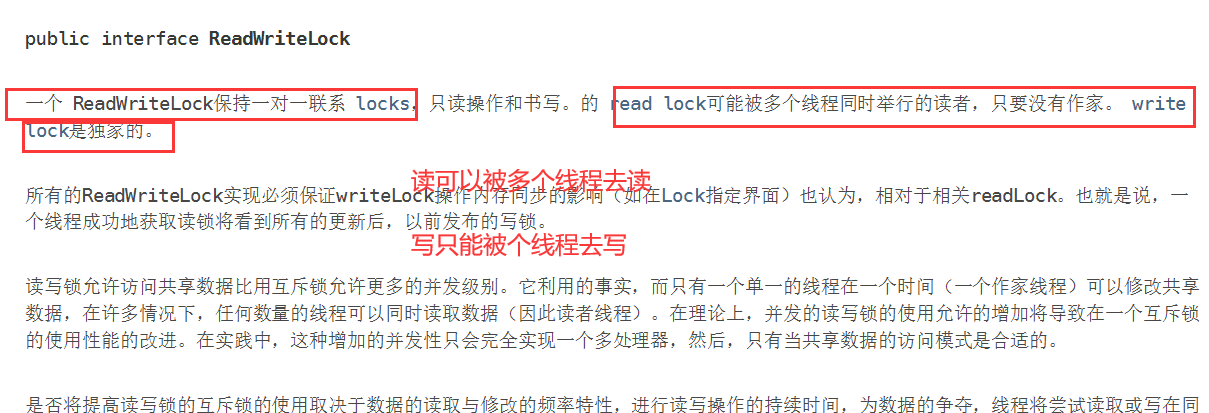
package com.mjh.rw;
import java.util.HashMap;
import java.util.Map;
import java.util.concurrent.locks.Lock;
import java.util.concurrent.locks.ReadWriteLock;
import java.util.concurrent.locks.ReentrantLock;
import java.util.concurrent.locks.ReentrantReadWriteLock;
/*
独占锁(写锁)一次只能被一个线程占有
共享锁(读锁)多个线程可以同时占有
ReadWriteLock
读-读 可以共存
读-写 不能共存
写-写 不能共存
*/
public class ReadWriteLockDemo {
public static void main(String[] args) {
MyCache1 myCache = new MyCache1();
//写入
for (int i = 0; i <=5 ; i++) {
final int temp=i;
new Thread(()->{
myCache.put(temp+"",temp+"");
},String.valueOf(i)).start();
}
//读取
for (int i = 0; i <=5 ; i++) {
final int temp=i;
new Thread(()->{
myCache.get(temp+"");
},String.valueOf(i)).start();
}
}
}
class MyCache{
private volatile Map<String,Object> map= new HashMap<>();
//存,写
public void put(String key,Object value){
System.out.println(Thread.currentThread().getName()+" 写入"+key);
map.put(key,value);
System.out.println(Thread.currentThread().getName()+" 写入成功");
}
//取,读
public void get(String key){
System.out.println(Thread.currentThread().getName()+" 读物"+key);
Object o = map.get(key);
System.out.println(Thread.currentThread().getName()+" 读取成功");
}
}
class MyCache1{
private volatile Map<String,Object> map= new HashMap<>();
//读写锁:更加细粒度的控制
private ReadWriteLock readWriteLock=new ReentrantReadWriteLock();
//private Lock lock=new ReentrantLock();//普通锁
//存,写的时候,只希望同时只有一个线程写
public void put(String key,Object value){
//lock.lock();
readWriteLock.writeLock().lock();
try {
System.out.println(Thread.currentThread().getName()+" 写入"+key);
map.put(key,value);
System.out.println(Thread.currentThread().getName()+" 写入成功");
} catch (Exception e) {
e.printStackTrace();
} finally {
readWriteLock.writeLock().unlock();
}
}
//取,读
public void get(String key){
readWriteLock.readLock().lock();
try {
System.out.println(Thread.currentThread().getName()+" 读取"+key);
Object o = map.get(key);
System.out.println(Thread.currentThread().getName()+" 读取成功");
} catch (Exception e) {
e.printStackTrace();
} finally {
readWriteLock.readLock().unlock();
}
}
}
9.阻塞队列
阻塞队列
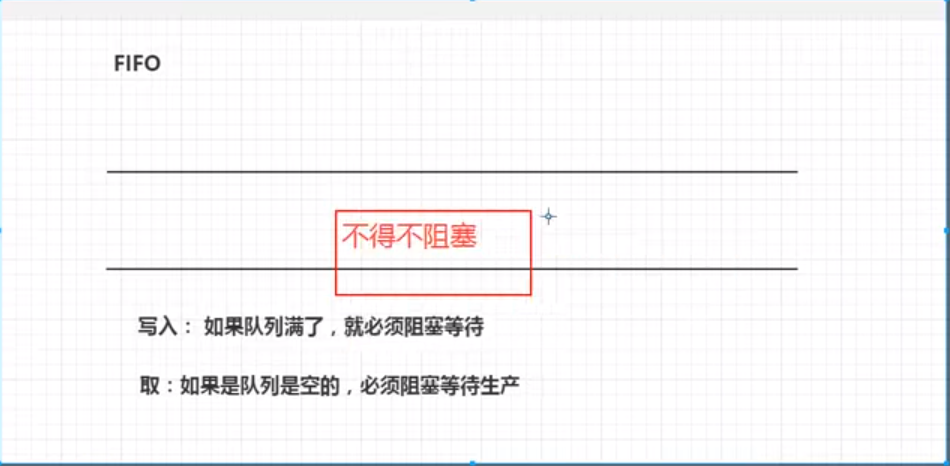
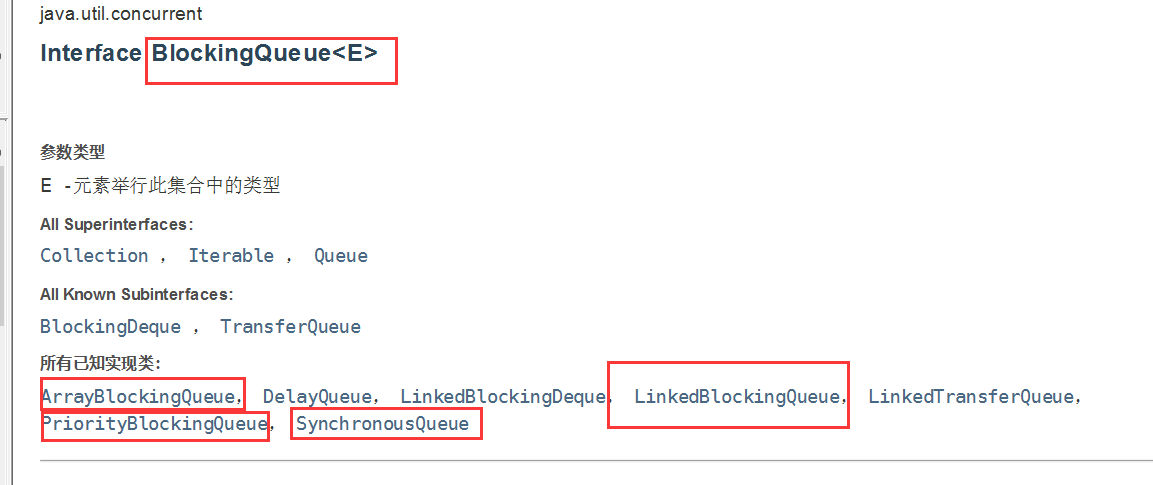

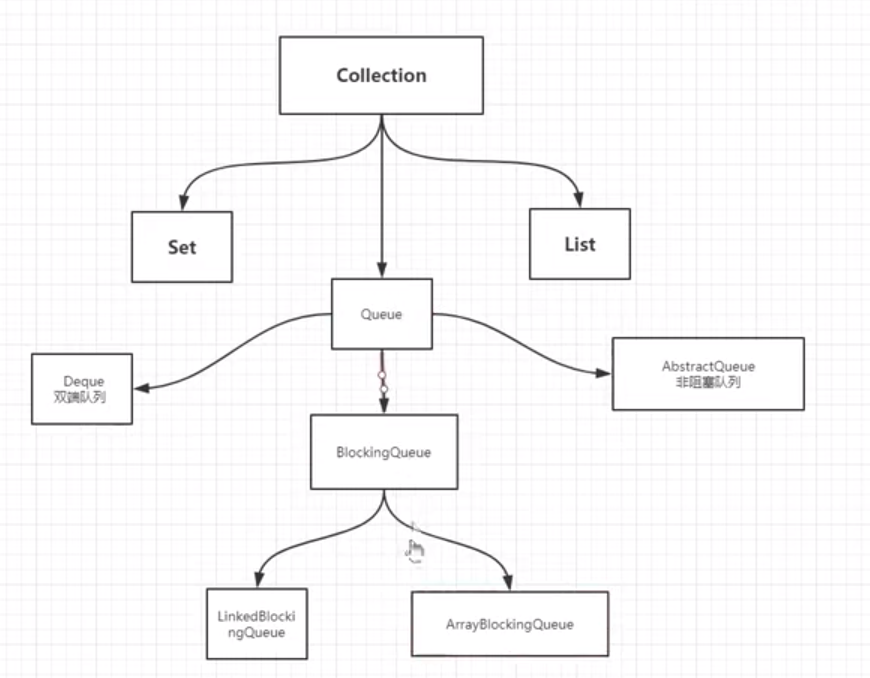
-
BlockingQueue 不是新东西
什么情况下我们会使用阻塞队列?多线程并发处理,线程池
学会使用队列
添加 移除
四组API
1.抛出异常
package com.mjh.bq;
import java.security.spec.RSAOtherPrimeInfo;
import java.util.concurrent.ArrayBlockingQueue;
//抛出异常
public class Demo {
public static void main(String[] args) {
test1();
}
public static void test1(){
//队列的大小
ArrayBlockingQueue<Object> blockingQueue = new ArrayBlockingQueue<>(3);
System.out.println(blockingQueue.add("A"));
System.out.println(blockingQueue.add("B"));
System.out.println(blockingQueue.add("C"));
//java.lang.IllegalStateException: Queue full
// System.out.println(blockingQueue.add("D"));
System.out.println(blockingQueue.element());//查询队首元素
System.out.println("======================");
System.out.println(blockingQueue.remove());
System.out.println(blockingQueue.remove());
System.out.println(blockingQueue.remove());
//java.util.NoSuchElementException
// System.out.println(blockingQueue.remove());
}
}
2.不会抛出异常,返回一个特殊值
//不会抛出异常,返回一个特殊值
public static void test2(){
//队列大小
ArrayBlockingQueue blockingQueue = new ArrayBlockingQueue<>(3);
System.out.println(blockingQueue.offer("A"));
System.out.println(blockingQueue.offer("B"));
System.out.println(blockingQueue.offer("C"));
// System.out.println(blockingQueue.offer("A"));//false 不抛出异常
System.out.println(blockingQueue.peek());//查询队首元素
System.out.println("=======================");
System.out.println(blockingQueue.poll());
System.out.println(blockingQueue.poll());
System.out.println(blockingQueue.poll());
// System.out.println(blockingQueue.poll());// null 不抛出异常
}
3.阻塞等待
/*
阻塞等待
*/
public static void test3() throws InterruptedException {
//队列大小
ArrayBlockingQueue blockingQueue = new ArrayBlockingQueue<>(3);
blockingQueue.put("A");
blockingQueue.put("B");
blockingQueue.put("C");
//blockingQueue.put("C");//队列没有位置了,一直等待
System.out.println(blockingQueue.take());
System.out.println(blockingQueue.take());
System.out.println(blockingQueue.take());
// System.out.println(blockingQueue.take()); //没有这个元素,一直等待
}
4.超时等待
/*
超时等待
*/
public static void test4() throws InterruptedException {
//队列的大小
ArrayBlockingQueue blockingQueue = new ArrayBlockingQueue<>(3);
System.out.println(blockingQueue.offer("A"));
System.out.println(blockingQueue.offer("B"));
System.out.println(blockingQueue.offer("C"));
System.out.println(blockingQueue.offer("D",5, TimeUnit.SECONDS));//等待超过5秒就退出
System.out.println("======================");
System.out.println(blockingQueue.poll());
System.out.println(blockingQueue.poll());
System.out.println(blockingQueue.poll());
System.out.println(blockingQueue.poll(5,TimeUnit.SECONDS));//等待超过5秒就退出
}
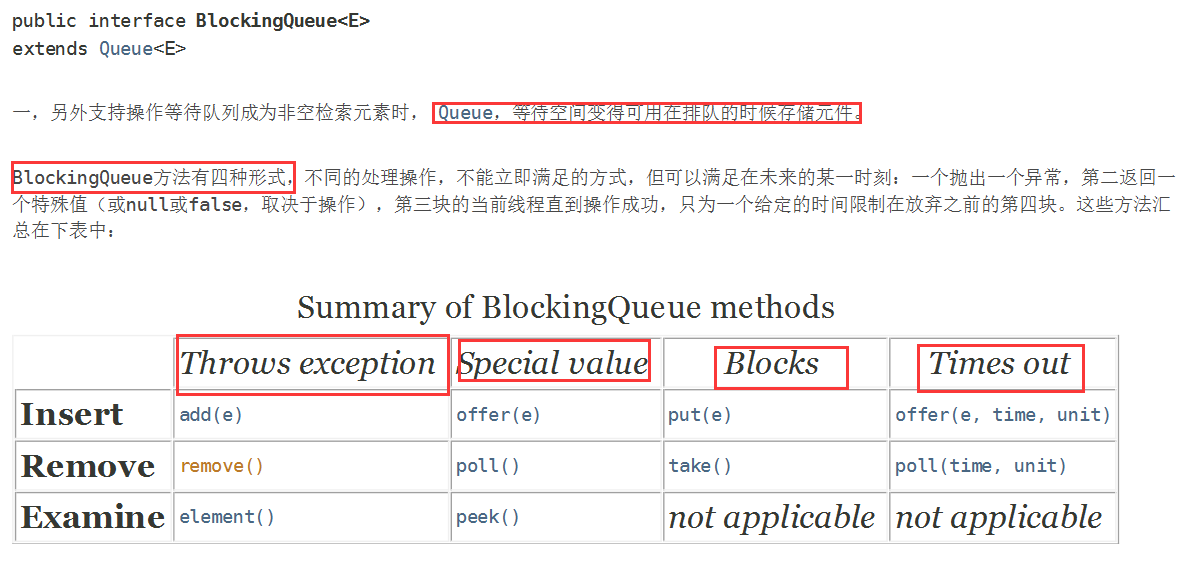
SynchronousQueue 同步队列
package com.mjh.bq;
import java.util.concurrent.BlockingQueue;
import java.util.concurrent.SynchronousQueue;
import java.util.concurrent.TimeUnit;
/**
* 同步队列
* 和其他的BlockingQueue不一样,SynchronousQueue不存储元素
* put了一个元素,必须从里面先take取出来,否则不能再put进去值
*/
public class SynchronousQueueDemo {
public static void main(String[] args) {
BlockingQueue<String> blockingQueue = new SynchronousQueue<>();//同步队列
new Thread(()->{
try {
System.out.println(Thread.currentThread().getName()+" put 1");
blockingQueue.put("1");
System.out.println(Thread.currentThread().getName()+" put 2");
blockingQueue.put("2");
System.out.println(Thread.currentThread().getName()+" put 3");
blockingQueue.put("3");
} catch (InterruptedException e) {
e.printStackTrace();
}
},"T1").start();
new Thread(()->{
try {
TimeUnit.SECONDS.sleep(3);
System.out.println(Thread.currentThread().getName()+"=>"+ blockingQueue.take());
TimeUnit.SECONDS.sleep(3);
System.out.println(Thread.currentThread().getName()+"=>"+ blockingQueue.take());
TimeUnit.SECONDS.sleep(3);
System.out.println(Thread.currentThread().getName()+"=>"+ blockingQueue.take());
} catch (InterruptedException e) {
e.printStackTrace();
}
},"T2").start();
}
}
10.线程池(重点)
线程池技术:三大方法、7大参数、4种拒绝策略
池化技术
程序的运行,本质:占用系统的资源!优化资源的使用!=>用池化技术
线程池、连接池、内存池、对象池。。。。创建、销毁,十分浪费资源
池化技术:事先准备好一些资源,有人要用,就来我这里拿,用完之后还给我。
线程池的好处:
1、降低资源的消耗
2、提高响应的速度
3、方便管理
线程复用、可以控制最大并发数、管理线程
线程池:三大方法

package com.mjh.pool;
import java.util.concurrent.ExecutorService;
import java.util.concurrent.Executors;
//Executors 工具类
public class Demo {
public static void main(String[] args) {
ExecutorService threadPool = Executors.newSingleThreadExecutor();//单个线程
//ExecutorService threadPool = Executors.newFixedThreadPool(5);//创建一个固定的线程池大小
//ExecutorService threadPool = Executors.newCachedThreadPool();//可伸缩的,遇强则强,遇弱则弱
try {
for (int i = 0; i <100 ; i++) {
//使用了线程池之后,使用线程池来创建对象
threadPool.execute(()->{
System.out.println(Thread.currentThread().getName()+" OK");
});
}
} catch (Exception e) {
e.printStackTrace();
} finally {
//线程池用完,程序结束,关闭线程池
threadPool.shutdown();
}
}
}
7大参数
源码分析
public static ExecutorService newSingleThreadExecutor() {
return new FinalizableDelegatedExecutorService
(new ThreadPoolExecutor(1, 1,
0L, TimeUnit.MILLISECONDS,
new LinkedBlockingQueue<Runnable>()));
}
public static ExecutorService newFixedThreadPool(int nThreads) {
return new ThreadPoolExecutor(nThreads, nThreads,
0L, TimeUnit.MILLISECONDS,
new LinkedBlockingQueue<Runnable>());
}
public static ExecutorService newCachedThreadPool() {
return new ThreadPoolExecutor(0, Integer.MAX_VALUE,
60L, TimeUnit.SECONDS,
new SynchronousQueue<Runnable>());
}
本质就是 ThreadPoolExecutor
public ThreadPoolExecutor(int corePoolSize,//核心线程池大小
int maximumPoolSize,//最大核心线程池大小
long keepAliveTime,//超时了没有人调用就会释放
TimeUnit unit,//超时单元
BlockingQueue<Runnable> workQueue, //阻塞队列
ThreadFactory threadFactory,//线程工厂,创建线程,一般不用动
RejectedExecutionHandler handler//拒绝策略) {
if (corePoolSize < 0 ||
maximumPoolSize <= 0 ||
maximumPoolSize < corePoolSize ||
keepAliveTime < 0)
throw new IllegalArgumentException();
if (workQueue == null || threadFactory == null || handler == null)
throw new NullPointerException();
this.corePoolSize = corePoolSize;
this.maximumPoolSize = maximumPoolSize;
this.workQueue = workQueue;
this.keepAliveTime = unit.toNanos(keepAliveTime);
this.threadFactory = threadFactory;
this.handler = handler;
}

手动创建
package com.mjh.pool;
import java.util.concurrent.*;
//Executors 工具类
/*
new ThreadPoolExecutor.AbortPolicy());//银行满了,还有人进来,有权不处理这个人的业务,抛出异常
new ThreadPoolExecutor.CallerRunsPolicy());//哪里来的回哪里去
new ThreadPoolExecutor.DiscardPolicy());//队列满了,剩余自动丢弃,不会抛出异常
new ThreadPoolExecutor.DiscardOldestPolicy());//队列满了,尝试去和最早的竞争,不会抛出异常
*/
public class Demo {
public static void main(String[] args) {
ThreadPoolExecutor threadPool = new ThreadPoolExecutor(
2,//核心窗口
5,//最大窗口数量
3,//超时时间 银行有五个窗口开着,今天人少,有三个窗口是空闲的,这三个窗口在三秒后关闭
TimeUnit.SECONDS,//超时单元
new LinkedBlockingDeque<>(3),//候客区
Executors.defaultThreadFactory(),//线程工厂,一般不用动
new ThreadPoolExecutor.DiscardOldestPolicy());//队列满了,尝试去和最早的竞争,不会抛出异常
try {
//最大承载:Deque+max
//超过了RejectedExecutionException 异常
for (int i = 0; i <9; i++) {
//使用了线程池之后,使用线程池来创建对象
threadPool.execute(()->{
System.out.println(Thread.currentThread().getName()+" OK");
});
}
} catch (Exception e) {
e.printStackTrace();
} finally {
//线程池用完,程序结束,关闭线程池
threadPool.shutdown();
}
}
}
4 大拒绝策略

new ThreadPoolExecutor.AbortPolicy());//银行满了,还有人进来,有权不处理这个人的业务,抛出异常
new ThreadPoolExecutor.CallerRunsPolicy());//哪里来的回哪里去
new ThreadPoolExecutor.DiscardPolicy());//队列满了,剩余自动丢弃,不会抛出异常
new ThreadPoolExecutor.DiscardOldestPolicy());//队列满了,尝试去和最早的竞争,不会抛出异常
IO密集型和CPU密集型
最大线程到底该如何定义
package com.mjh.pool;
import java.util.concurrent.*;
//Executors 工具类
public class Demo {
public static void main(String[] args) {
/**
* 自定义线程池 工作中使用 ThreadPoolExecutor
*
* 最大线程到底该如何定义
* 1.cpu 密集型,几核,就是几,可以保持CPU的效率最高!
* 2.IO 密集型 > 判断你程序中十分好IO的线程
* 程序 15大型任务 IO十分占用资源
*/
System.out.println(Runtime.getRuntime().availableProcessors());
ThreadPoolExecutor threadPool = new ThreadPoolExecutor(
2,//核心窗口
Runtime.getRuntime().availableProcessors(),//可利用处理器
3,//超时时间 银行有五个窗口开着,今天人少,有三个窗口是空闲的,这三个窗口在三秒后关闭
TimeUnit.SECONDS,//超时单元
new LinkedBlockingDeque<>(3),//候客区
Executors.defaultThreadFactory(),//线程工厂,一般不用动
new ThreadPoolExecutor.DiscardOldestPolicy());//队列满了,尝试去和最早的竞争,不会抛出异常
try {
//最大承载:Deque+max
//超过了RejectedExecutionException 异常
for (int i = 0; i <9; i++) {
//使用了线程池之后,使用线程池来创建对象
threadPool.execute(()->{
System.out.println(Thread.currentThread().getName()+" OK");
});
}
} catch (Exception e) {
e.printStackTrace();
} finally {
//线程池用完,程序结束,关闭线程池
threadPool.shutdown();
}
}
}
11 .四大函数式接口(必须掌握)
新时代的程序员:lambda表达式、链式编程、函数式接口、Stream流式计算
函数式接口:只有一个方法的接口
@FunctionalInterface
public interface Runnable {
public abstract void run();
}
//传统程序员:泛型 枚举 反射
//超级多的@FunctionalInterface
//简化编程模型,在新版本的框架底层大量使用
//foreach(消费者类函数式接口)

Function函数式接口

package com.mjh.function;
import java.util.function.Function;
/**
* Function 函数式接口 只有一个输入参数,一个输出
* 只要是 函数式接口 可以用lambda表达式
*/
public class Demo01 {
public static void main(String[] args) {
/* Function<String,String> function= new Function<String,String>(){
@Override
public String apply(String str) {
return str;
}
};*/
Function<String,String> function= (str)->{return str;};
System.out.println(function.apply("abc"));
}
}
Predicate 断定型接口:只有一个传入参数,返回值只能是布尔值
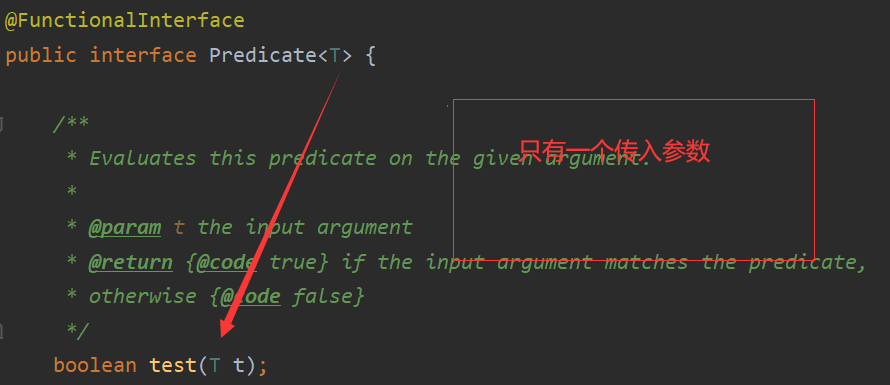
package com.mjh.function;
import java.util.function.Predicate;
/**
* Predicate断定型接口 只有一个传入参数,返回值只能是布尔值
*/
public class Demo02 {
public static void main(String[] args) {
/* Predicate<String> predicate = new Predicate<String>() {
@Override
public boolean test(String s) {
return s.isEmpty();
}
};*/
Predicate<String> predicate=(s)->{ return s.isEmpty();};
System.out.println(predicate.test("aaa"));
}
}
Consumer 消费型接口:只有一个传入参数,没有返回值

package com.mjh.function;
import java.util.function.Consumer;
/**
* Consumer 消费型接口 只有传入参数,,没有返回值
*/
public class Demo03 {
public static void main(String[] args) {
/* Consumer<String> consumer = new Consumer<String>() {
@Override
public void accept(String s) {
System.out.println(s);
}
};*/
Consumer<String> consumer =(s)->{
System.out.println(s);
};
consumer.accept("ccccgfd");
}
}
Suplier 供给型接口:没有参数,只有返回值
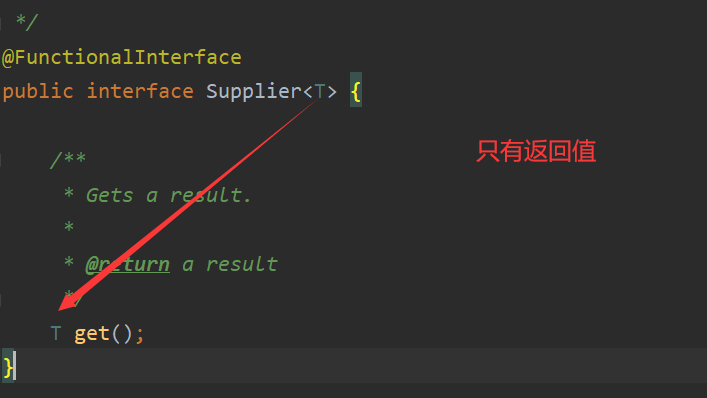
package com.mjh.function;
import java.util.function.Supplier;
public class Demo04 {
public static void main(String[] args) {
/* Supplier<String> supplier = new Supplier<String>() {
@Override
public String get() {
System.out.println("get()");
return "1024";
}
};
*/
Supplier<String> supplier =()->{return "1024";};
System.out.println(supplier.get());
}
}
作用:
简化编程,提高效率
12.Stream 流式计算
package com.mjh.stream;
import com.sun.xml.internal.ws.api.model.wsdl.WSDLOutput;
import java.lang.reflect.Array;
import java.util.ArrayList;
import java.util.Arrays;
import java.util.List;
/**
*题目要求:一分钟内完成此题,只能用一行代码实现!
* 现在5个用户,筛选:
* 1.ID必须是偶数
* 2.年龄必须大于23岁
* 3.用户转为大写字母
* 4.用户名字倒着排序
* 5.只输出一个用户
*/
public class StreamTest {
public static void main(String[] args) {
User u1 = new User(1, "a", 21);
User u2 = new User(2,"b",22);
User u3 =new User(3,"c",23);
User u4 = new User(4,"d",24);
User u5 =new User(6,"e",25);
User u6 =new User(8,"f",28);
//集合就是存储
List<User> list= Arrays.asList(u1,u2,u3,u4,u5,u6);
//计算交给Steam流
// lambda表达式,链式编程,函数式接口,Stream流式计算
list.stream()
.filter(u->{return u.getId()%2==0;})
.filter(u->{return u.getAge()>23;})
.map(u->{return u.getName().toUpperCase();})
.sorted((uu1,uu2)->{return uu2.compareTo(uu1);})
.limit(1)
.forEach(System.out::println);
}
}
13 .ForkJoin
什么ForkJoin
使用场景:并行执行任务,提高效率,大数据量!
大数据:Map Reduce(把大任务拆分成小任务)
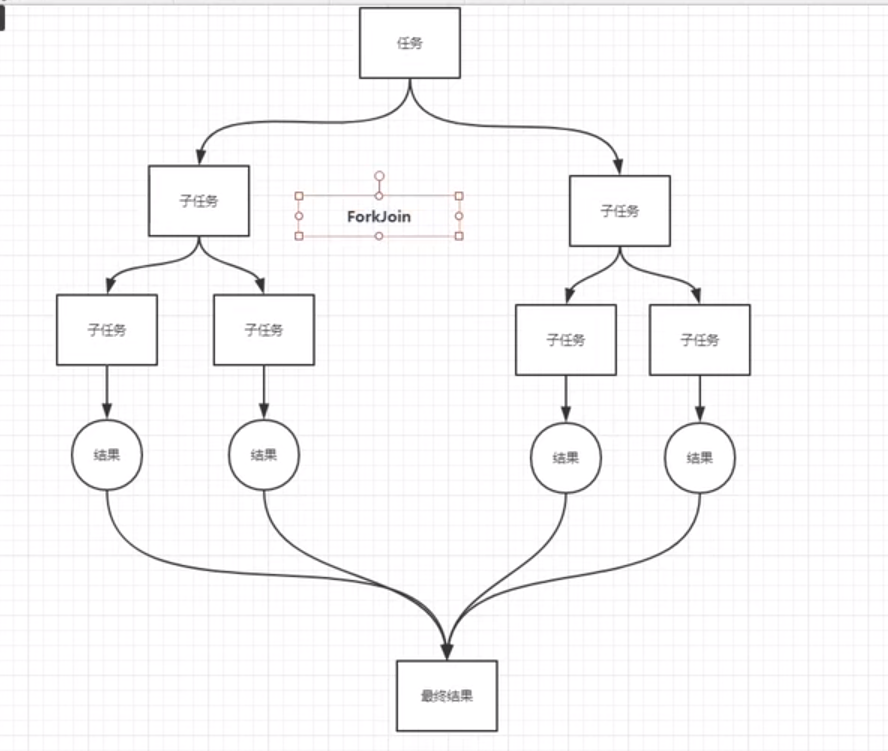
ForkJoin 特点
工作窃取
这里面维护都是双端队列
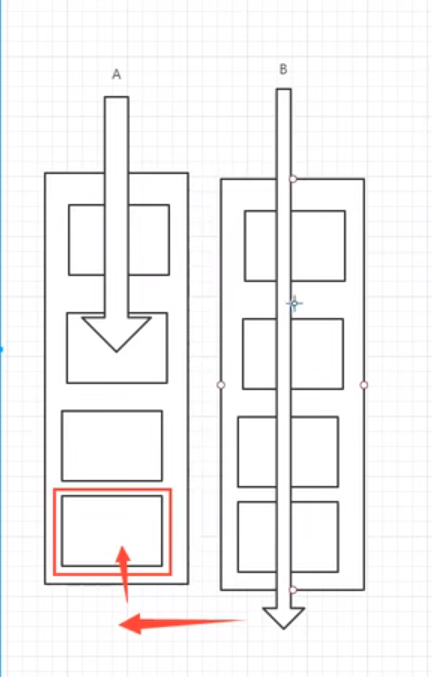
14.异步回调
Future 设计的初衷:对将来的某个事件的结果进行建模
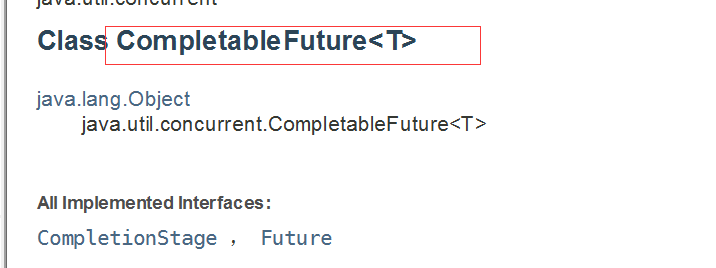
package com.mjh.future;
import java.util.concurrent.CompletableFuture;
import java.util.concurrent.ExecutionException;
import java.util.concurrent.TimeUnit;
/** 异步回调 CompletableFuture/Ajax
* 异步执行
* 成功回调
* 失败回调
*/
public class Demo {
public static void main(String[] args) throws ExecutionException, InterruptedException {
/*//没有返回值的runAsync 异步回调
CompletableFuture<Void> completableFuture = CompletableFuture.runAsync(() -> {
try {
TimeUnit.SECONDS.sleep(2);
} catch (InterruptedException e) {
e.printStackTrace();
}
System.out.println(Thread.currentThread().getName()+"runAsync=>Void");
});
System.out.println("aaaaa");
completableFuture.get();//阻塞获取执行结果
*/
//有返回值的supplyAsync 异步回调
//ajax, 成功和失败的回调
//返回的是错误的信息
CompletableFuture<Integer> completableFuture = CompletableFuture.supplyAsync(() -> {
System.out.println(Thread.currentThread().getName()+" supplyAsync=>Integer");
int i=10/0;
return 1024;
});
System.out.println(completableFuture.whenComplete((t,u)->{
System.out.println("t=>"+t);//正常的返回结果
System.out.println("u=>"+u);//错误信息,java.util.concurrent.CompletionException: java.lang.ArithmeticException: / by zero
}).exceptionally((e)->{
System.out.println(e.getMessage());
return 404;//可以获取到的错误的返回结果
}).get());
}
}